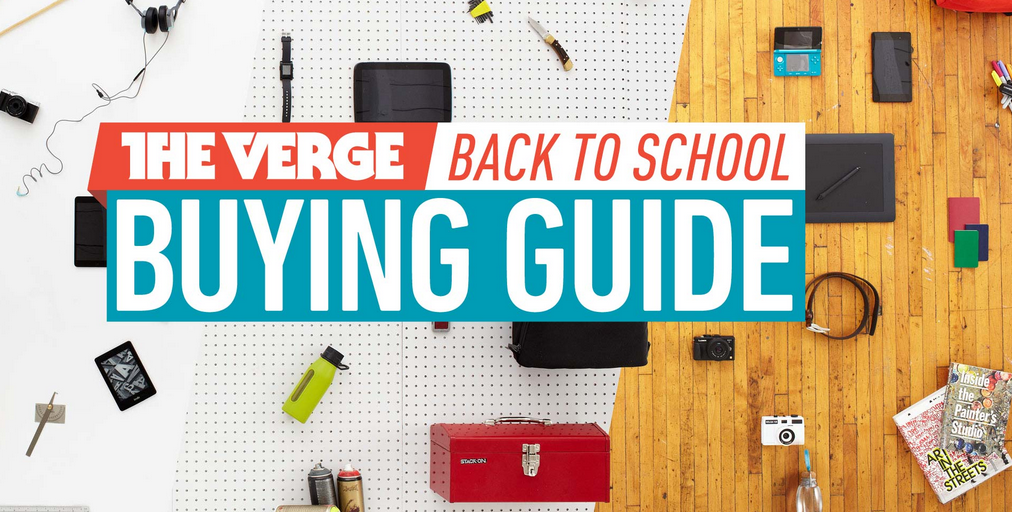
Back-to-school product guides are a rite of passage for magazines. But on the Web, they’ve turned into lists, often just linking back to products on Amazon. Today, Vox Media’s tech site The Verge rolled out a new spin on the old standby.
The Verge Back to School Guide is the publisher’s attempt to bring a magazine-like experience to the Web. Built in-house with responsive design — it looks the same across desktop, mobile and tablet — the guide is chock full of bold images that highlight products. It was an opportunity for the media company to flex its product muscles.
“These days when people read stories on the Web, people come to a site expecting to encounter distractions to getting what they wanted,” said Michael Shane, assistant to the editor-in-chief. “This is our way of solving that challenge.”
For example, the navigation is unobtrusive; it’s infinite scroll. It carries a single ad from sponsor HP, which appears as you scroll down through the characters. The ad isn’t a standard IAB and was custom-built by Vox.
“One thing that magazines do really well is advertising tends to not be as annoying as they are on the Web, or distracting,” said Dave Epstein, product manager for The Verge. “The advertising [for the guide] is integrated with design so that it flows well.”
The Verge created three characters, each representing three archetypes of Verge readers: the engineer, the designer and the artist. Products surround each character. Those with the colored dots (blue for designer, red for engineer) are the ones recommended. Hover over the dot and you get the price of the product, as well as an outbound link to where you can purchase. If The Verge has previously written a review of the product, a link will take you to it. For example, there’s a Verge review for the Nexus 10 under the “media” recommendations for the engineer.
The project is a showcase of the modern publisher at work. Vox has trumpeted its tech bent, starting with its homegrown content-management system. Projects like the back-to-school guide show how publishers need a product mindset more often associated with tech companies.
The project took six weeks to build. This is the start of the direction the company wants to take for custom features and pieces. Because all Vox sites, SB Nation, Polygon and The Verge, operate on the company’s custom-built CMS this can be adapted throughout the company. The Verge did all the photography, eschewing stock product shots.
“This was done with same level as you’d find in a high-end beautiful print magazine,” Epstein said. “To some extent, when you want to make a guide — that’s more than just a list — that’s the kind of investment required.”
More in Media

NewFronts Briefing: Samsung, Condé Nast, Roku focus presentations on new ad formats and category-specific inventory
Day two of IAB’s NewFronts featured presentations from Samsung, Condé Nast and Roku, highlighting new partnerships, ad formats and inventory, as well as new AI capabilities.

The Athletic to raise ad prices as it paces to hit 3 million newsletter subscribers
The New York Times’ sports site The Athletic is about to hit 3 million total newsletter subscribers. It plans to raise ad prices as as a result of this nearly 20% year over year increase.

NewFronts Briefing: Google, Vizio and news publishers pitch marketers with new ad offerings and range of content categories
Day one of the 2024 IAB NewFronts featured presentations from Google and Vizio, as well as a spotlight on news publishers.
Ad position: web_bfu

